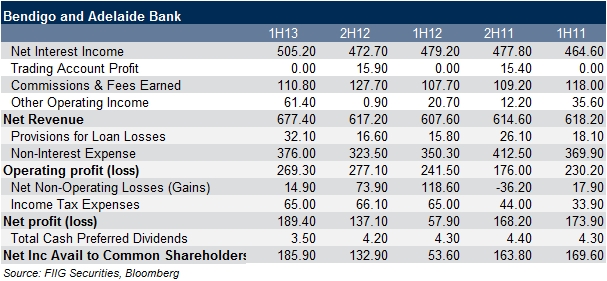by
Elizabeth Moran | May 13, 2014
Key points:
- The major banks have continued to issue the “new style” hybrids in the ASX listed market, in part due to past success and in part due to the ASX market being the lowest perceived cost market in which to issue the securities.
- The new hybrids can skip income unlike a term deposit or senior or subordinated bond, where interest is a legal obligation and must be paid.
- One of the attractions of term deposits and bonds is the known return of capital at maturity. Investors in the Westpac notes do not know how or if they will be repaid and there are a number of options available.
Last week Westpac brought a new hybrid issue to the ASX listed market. The target capital raising is $750m, but if demand is higher, I would expect the issue to be upsized.
The major banks have continued to issue the “new style” hybrids in the ASX listed market, in part due to past success and in part due to the ASX market being the lowest perceived cost market in which to issue the securities.
Retail investors have been significant buyers of the “new style” hybrids, attracted to the well-known major banks issuing them and the higher returns on offer over term deposit rates. However a key additional risk is that interest on the notes does not have to be paid and can be foregone altogether.
There is no certainty of income, unlike a term deposit or senior or subordinated bond, where interest is a legal obligation and must be paid.
Investors need to weigh up the extra return they need to compensate for this risk. Loss of income could have serious consequences.
One of the attractions of term deposits and bonds is the known return of capital at maturity. Investors in the Westpac notes do not know how or if they will be repaid. “New style” hybrids do not offer that certainty and have a range of possible options to convert, redeem or transfer, which investors must evaluate:
- Option for Westpac to convert, redeem or transfer the notes on 23 September 2022 (over eight years).
- Scheduled conversion date 23 September 2024 (over ten years).
- If neither point one or two above occur, the notes become perpetual (no maturity date).
- Will convert to shares on breach of a capital trigger of 5.125 per cent.
- Will convert to shares at APRA’s determination of “non-viability”.
Conversion in the last two instances would occur at a time of distress for the bank and I would expect the share price to be falling rapidly, meaning investors would likely face a loss. The other possibility is that neither of the two call dates is met and the hybrids become perpetual, in other words the bank never has to repay investors. In that instance you would have to sell to recoup capital at the going market rate, again with the possibility of a loss.
The question to consider is “What additional extra return is needed over subordinated bonds (the lower risk investment) to invest in the hybrids?”
The table compares the Westpac notes to the Bendigo and Adelaide Bank subordinated debt issued in January 2014. The Bendigo bond has mandatory interest payments and must be repaid at final maturity on 29 January 2024, although can be repaid earlier on 29 January 2019. It is also floating rate with a trading margin of 2.13 per cent as at 8 May 2014. The additional margin investors are being offered to buy the hybrid is 0.97 per cent, including franking credits, a low premium to compensate for the much higher risk involved.
The Westpac note is expected to offer 3.05 per cent including franking. The interest payment for the first quarter will be BBSW of 2.68 per cent plus the margin of 3.05 per cent to show a total 5.73 per cent on a per annum basis. Using the per annum calculation, investors will be paid 5.73 x 0.7 = 4.01 per cent (or $4.01) as a distribution and 5.73 - 4.01 = 1.72 per cent ($1.72) in delayed franking credits which must be claimed at tax time.
